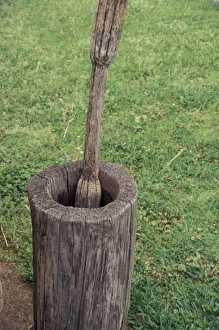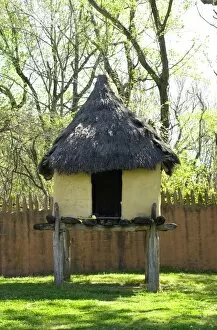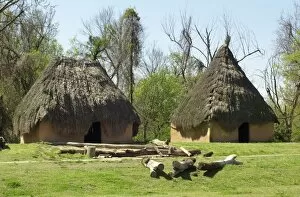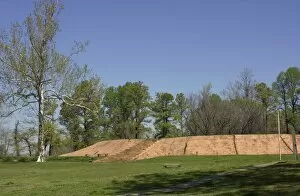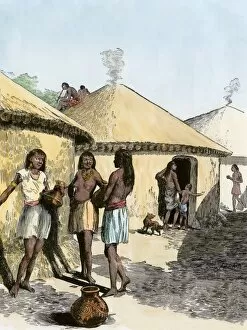Mound Builder Collection
The Moundbuilders were ancient Native American civilizations that left behind a rich legacy of impressive earthworks and artifacts
All Professionally Made to Order for Quick Shipping
The Moundbuilders were ancient Native American civilizations that left behind a rich legacy of impressive earthworks and artifacts. One such site is located in Tennessee, where archaeologists have discovered Native American corn grinding tools, providing insights into their agricultural practices. In Wisconsin, the Aztalan site stands as a testament to the ingenuity and craftsmanship of the Moundbuilders. Excavations at this location have unearthed numerous artifacts, including pottery shards (NATI2P-01076), stone tools (NATI2D-00285), and ceremonial objects (NATI2D-00288). These findings shed light on the cultural practices and religious beliefs of these ancient societies. Further south in Tennessee, another Moundbuilders site has been explored. Here, archaeologists have uncovered various items like pottery fragments (NATI2D-00280), arrowheads (NATI2D-00283), and shell ornaments (NATI2D-00279). These discoveries provide valuable insights into the daily lives and artistic expressions of these indigenous communities. Moving westward to Illinois, we find Cahokia Mound - an awe-inspiring earthwork constructed by the ancient Native American mound-builders. This monumental structure serves as a reminder of their sophisticated engineering skills and social organization. Meanwhile, in Ohio lies The Great Serpent Mound - an extraordinary creation built by pre-Colombian Native Americans. This serpent-shaped effigy mound holds great spiritual significance for its creators and showcases their mastery over shaping landscapes with precision. The sites mentioned above highlight just a fraction of what remains from this remarkable civilization known as the Moundbuilders. Through ongoing archaeological research across North America, we continue to unravel their mysteries while honoring their enduring contributions to our shared history.

